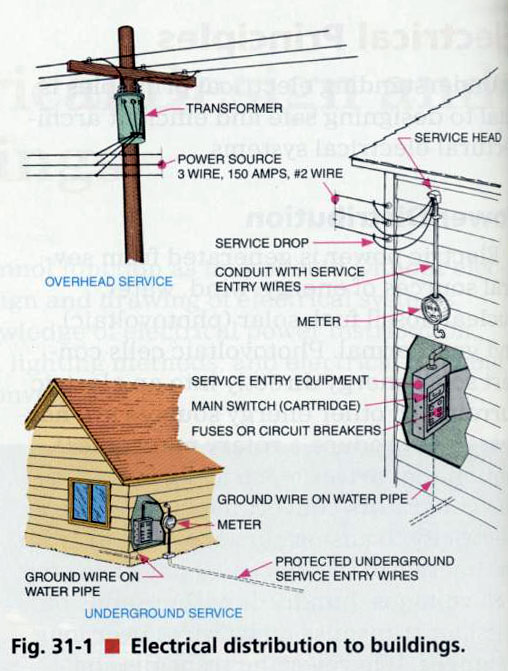The electrical system is one of the most important aspects of a house, and yet it can also be the least understood by the average homeowner. That’s because no one teaches us these things in school
Here’s a step-by-step guide to the anatomy of your electrical system and what it takes for electricity to travel from the power plant to the outlet in your wall.
Related Read: 10 Simple Tips to Save On Energy Costs This Summer
From the Power Plant to Your Home
First, the power plant generates electricity and sends it to a transformer. The transformer converts this high-voltage electricity to a lower voltage that’s safer for smaller residences. Then, it passes the electricity to a meter and then connects to your house on the way at either the service drop or service lateral. To paraphrase the difference between the two:

With underground service the connection is a service lateral and happens close to the ground. Wire buried at least 2 feet underground travels from the transformer to the side of your house and up through a conduit to the meter.
The meter connects to your house’s grounding rod, which protects the electrical system in case of sudden static discharge. (This is otherwise known as lightning!) After measuring how much your household consumes, the meter outputs the electricity received to the service panel inside your house.
The service panel is where things get tricky, but this walk-through can help to demystify it. Your house’s main electrical circuit begins at the service panel. Electricity comes in via two 120 volt wires, each of which connect to a bus bar to power the circuit breakers in the panel.
Single pole circuit breakers attach to only one bus bar to receive 120 volts; that’s all that low power devices like lights need. Double pole circuit breakers attach to both bus bars, receiving 240 volts and powering energy-hungry appliances like your electric range, clothes dryer and air conditioner.
The electricity running through your house always returns to the service panel. It travels back along neutral wires, which connect to the neutral bar in the service panel. From there, it will pass all the way back to the transformer.
Knowing more about the way your house’s electricity works makes it easier to identify the source of trouble in the event a problem occurs. However, electrical systems are highly dangerous for the would-be DIY handyman or handywoman.
Related Read: 4 Reasons Why You Should Ditch Electrical DIY


